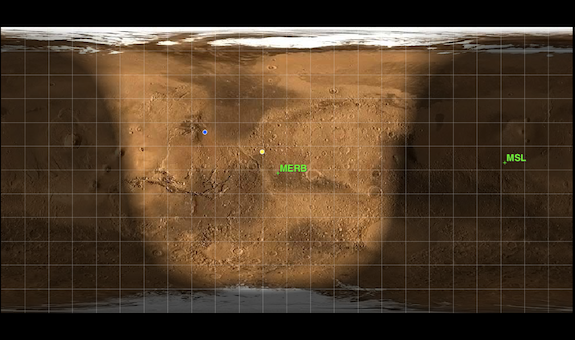How Do You Tell Time on Mars? There’s an App for That
NASA has produced an app that helps scientists and amateurs alike keep track of time on the Red Planet
/https://tf-cmsv2-smithsonianmag-media.s3.amazonaws.com/filer/65/f9/65f93fb6-a9a7-40d5-814c-714582fec935/mars24.png)
Remotely controlling a rover on Mars can get a little bit complicated. Scientists and engineers must make thousands of decisions every day on what types of data to collect, what information to transmit back to Earth and where to guide the intrepid explorer next.
On top of all this, they must keep track of something most of us rarely consider: the time on Mars. Knowing exactly when afternoon arrives for a particular rover—either Opportunity, which landed in 2004 and is still in operation, or Curiosity, which arrived to great fanfare earlier this week—is crucial for its operators, since that is when data is uploaded from the craft and sent back to Earth.
“The rover downlink, in the afternoon on Mars, is what we use to plan the next day’s activities for the rover,” says Smithsonian scientist John Grant, who works on daily geologic data collection as well as long-term planning for the mission. “So we are tied to the time of the downlink and when the uplink of the commands will occur the next morning.”
The problem is that Mars has a 24-hour and 39-minute day, so its time zones don’t match up with any on Earth. Unlike, say, East Coast residents simply remembering to subtract three hours to know the time on the West Coast, scientists must keep track of a constantly varying difference between time zones. ”It’s confusing to keep track of two different times, especially when you are used to living on one time and working on another that keeps shifting,” Grant says.
Thankfully, there’s an app for that.
NASA has produced a free Java application called Mars24 that provides the exact times for a number of places on the Red Planet, including the current location of Opportunity (a.k.a. MER, the Mars Exploration Rover ), Curiosity (a.k.a. MSL, the Mars Science Laboratory) and even the immobile Viking 1 lander, which has been out of operation since 1982. You can also alter the settings to see the time at given Martian landmarks, such as Olympus Mons, the tallest mountain on any planet in the Solar System.
The app also includes a visual representation of Mars called a sunclock, which shows a map of which parts of the planet are currently light and dark.

Mars24 is available for Mac OS X, Windows and Linux. If you want to have a handy way to check the time on your smartphone, you’ll have to opt for a non-NASA app, such as Mars Clock or Mars Surface Times, both available in the App Store for iPhone, or Martian Time, available at Google Play for Android.
Of course, Mars24 is fun for members of the public interested in following Curiosity, but the pros have their own ways of keeping track of Martian time. Grant says that the software which shows his daily schedule of meetings and Mars-related events expresses each entry in both Earth and Mars times. Additionally, when working on the previous rovers Spirit and Opportunity, he and other members of the team wore special watches that actually ran on Martian time. (His watch is on view in the Air and Space Museum if you’d like to check the time for yourself.)
One technical aspect to note is that although a Martian day is actually longer than 24 hours, the convention is still to express the time there in terms of a 24 hour period for convenience. To do so, scientists simply divide the actual duration of a Martian day by 24 to calculate the length of a Martian hour, and divide that by 60 for the length of a Martian minute, and so on. So a Martian hour is slightly longer than an Earth hour, and a Martian minute slightly longer than an Earth minute. All in all, pretty otherworldly.
/https://tf-cmsv2-smithsonianmag-media.s3.amazonaws.com/accounts/headshot/joseph-stromberg-240.jpg)
/https://tf-cmsv2-smithsonianmag-media.s3.amazonaws.com/accounts/headshot/joseph-stromberg-240.jpg)